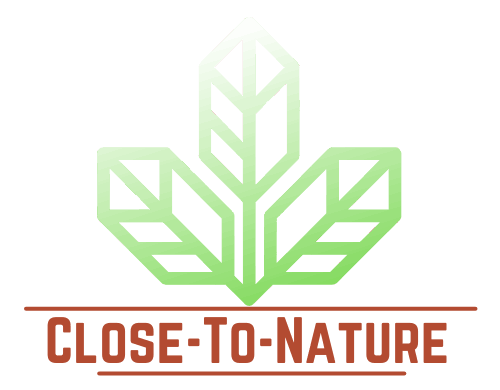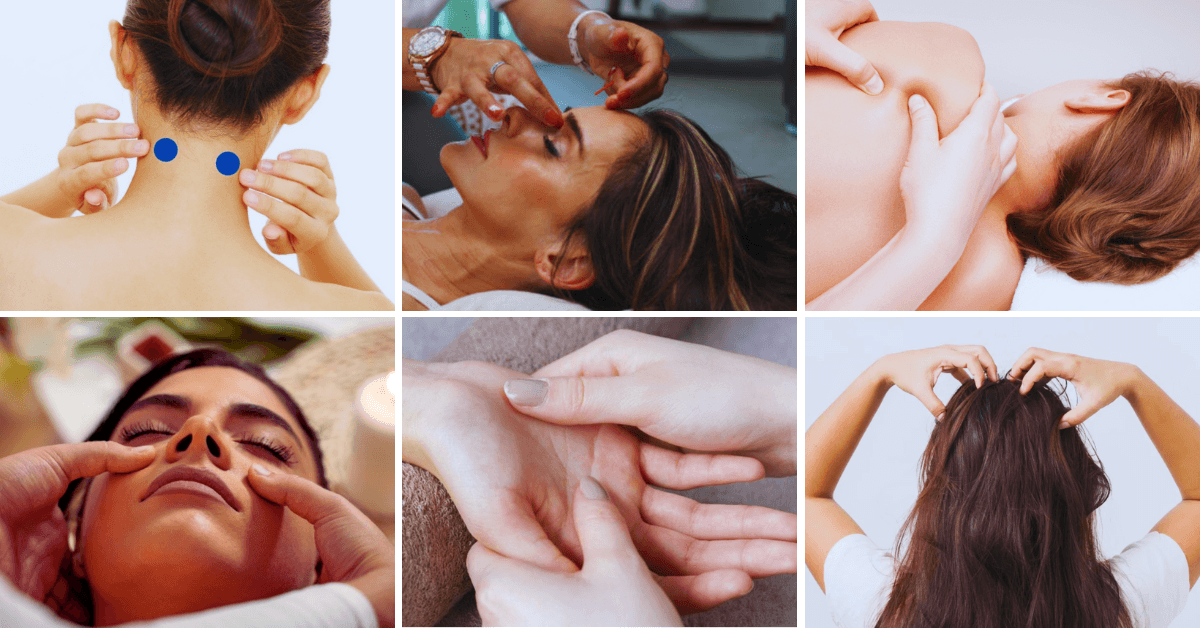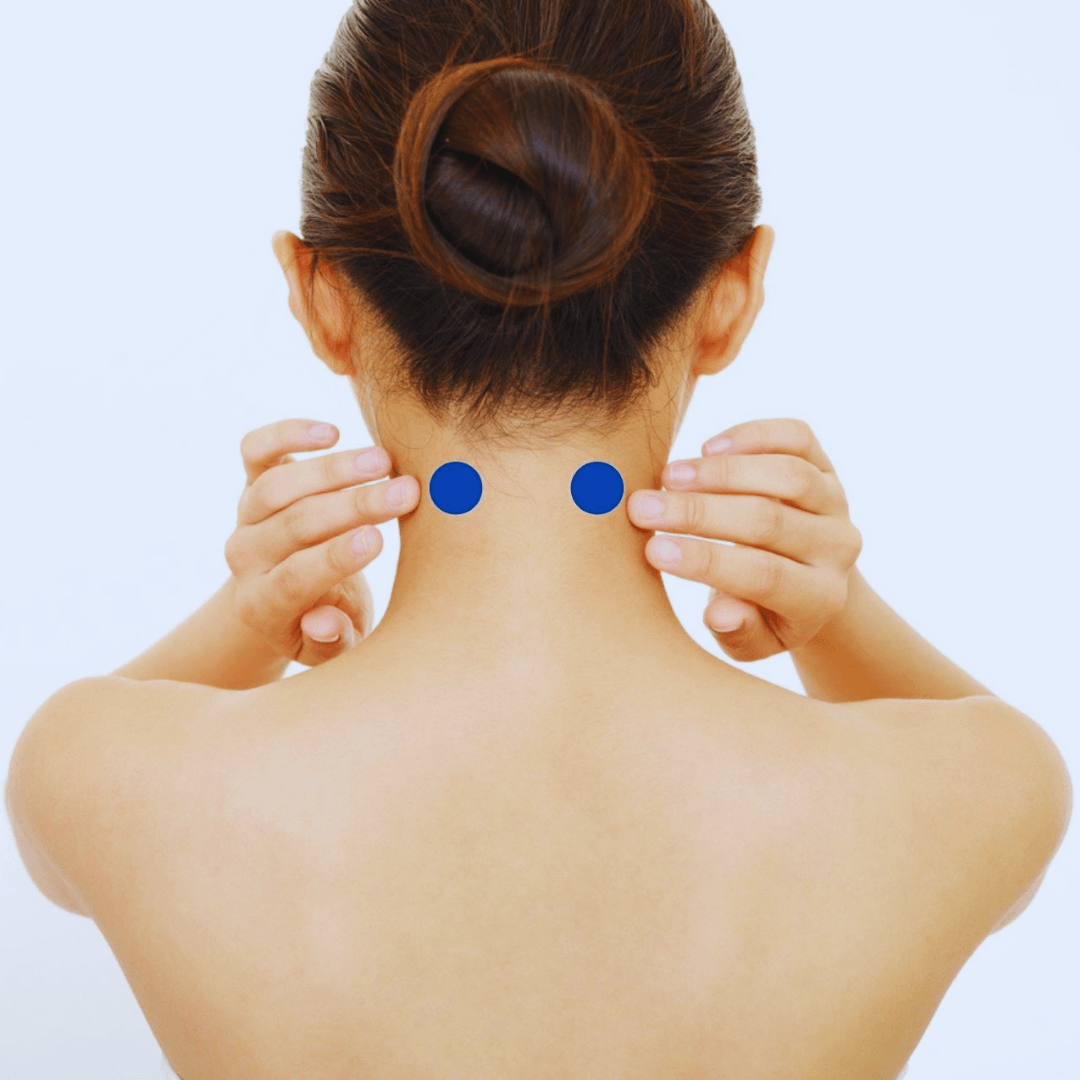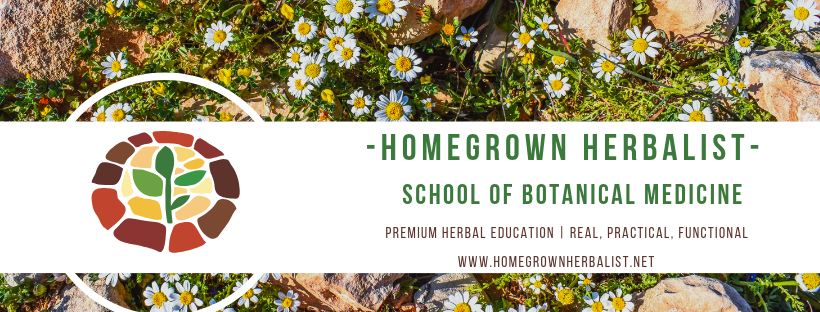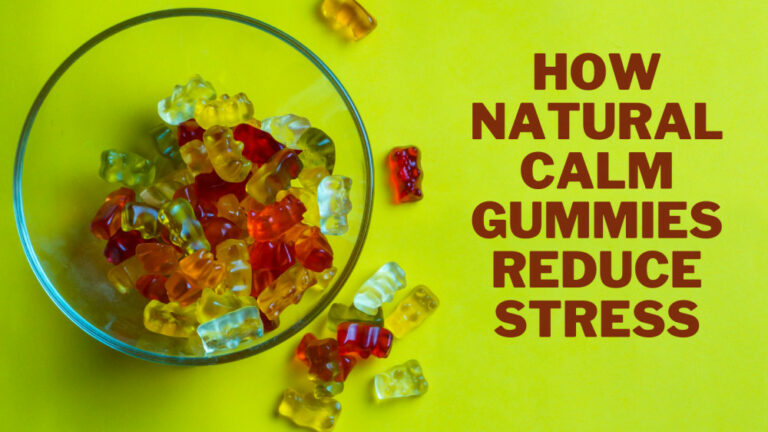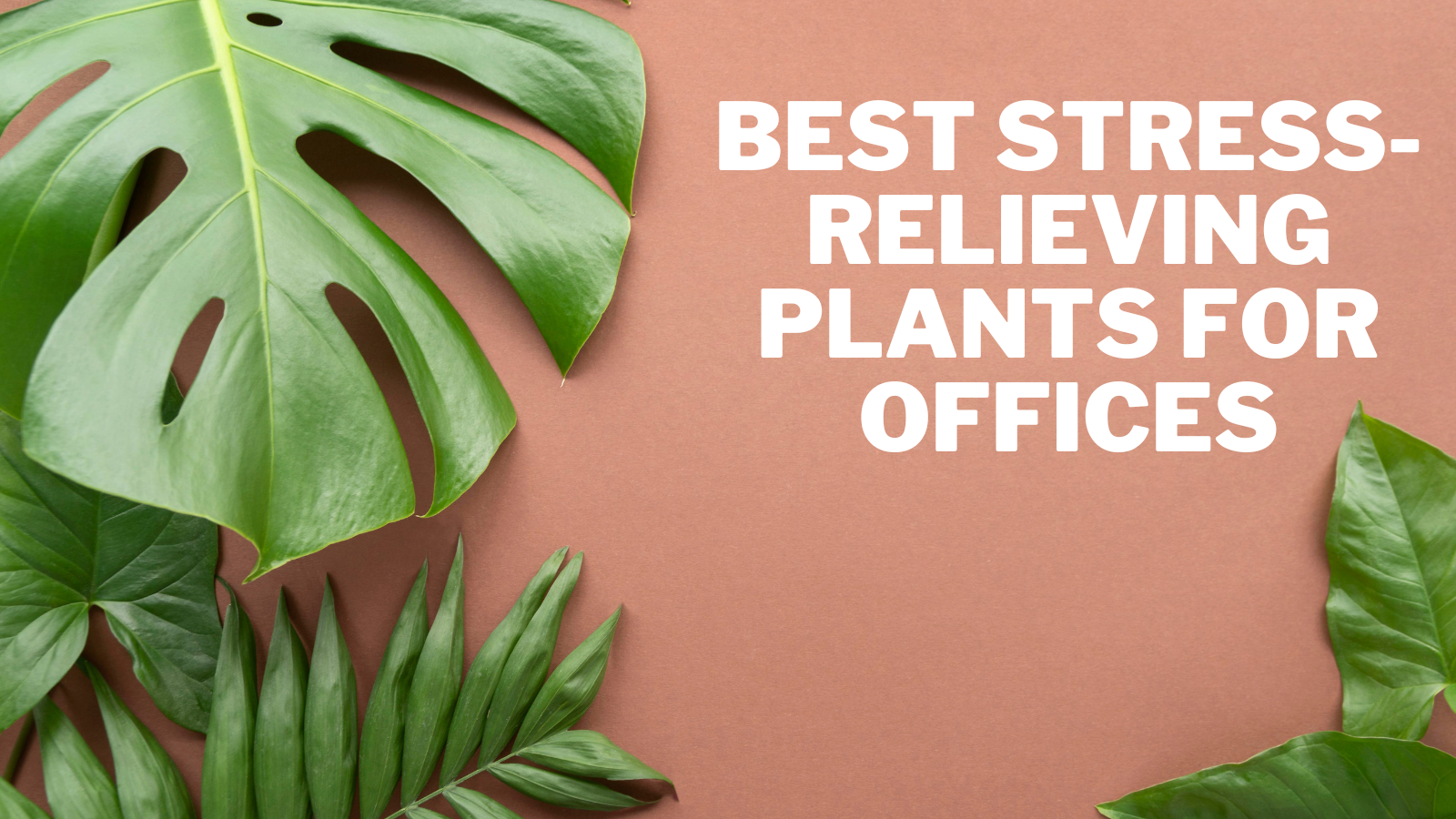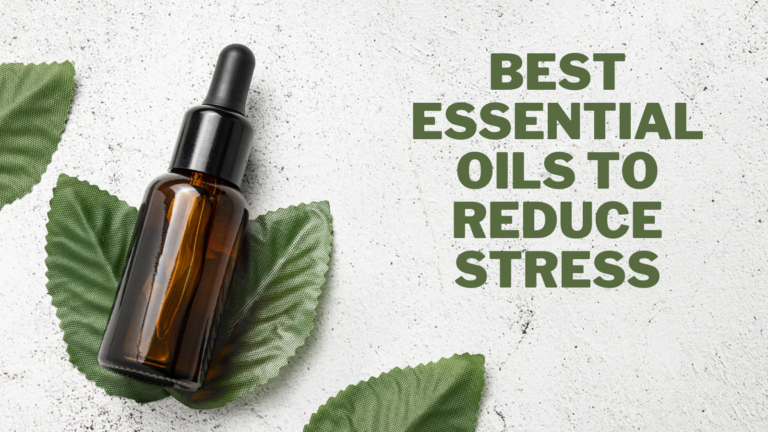Best Tension Headache Relief Pressure Points
Best Tension Headache Relief Pressure Points
Many people encounter headaches at some point. Tension headaches are one of the many types of headaches. They can disrupt our daily activities.
These headaches, often presenting as ringing and dull pain around the head, interfere with our performance and negatively impact our general health.
The use of pressure points is one strategy that has received much attention for relieving tension headaches, even though many treatments are available.
There may be a natural, non-invasive remedy for headache patients in these particular bodily parts, which is key to releasing tension and encouraging relaxation.
This article will discuss pressure points and some of the best pressure points for relieving tension headaches.
We will look at their positions, stimulation methods, and potential advantages in treating and lessening the severity of tension headaches.
Understanding and employing pressure points can be useful to your toolkit, whether you favour a holistic approach or are merely looking for alternate headache treatment techniques.
Let's set out on this adventure to learn how to eliminate tension headaches as we explore the intriguing world of pressure points and their power to make us feel better and restore harmony in our lives.
Reasons For Tension Headaches
As the name suggests, muscle stiffness and stress in the head, neck, and shoulder regions are the main causes of tension headaches.
Although the precise etiology of this muscle tension is not entirely understood, it is known that some variables can lead to tension headaches.
Tension headaches can be caused by extended muscular contractions and tightening in the head and neck.
The causes of this muscle tension include stress, anxiety, bad posture, and repetitive actions. Headache pain can result from the contraction of the muscles in the head and neck brought on by emotional stress, worry, and psychological strain.
Tension headaches may start due to the physiological changes brought on by the production of stress hormones.
Long-term use of bad postures, such as slouching or hunching over, can strain the neck and upper back muscles.
Tension headaches may result from this strain, producing muscle tension radiating to the head.
Eye muscles can become sore from activities that require prolonged eye use, such as spending too much time in front of a screen, reading for lengthy periods, or focusing on close-up objects. Eye fatigue can lead to tense muscles and tension headaches.
Tension headaches are more likely to occur if you get too little sleep, have poor-quality rest, or have inconsistent sleeping habits.
Muscle strain and a general increase in headache susceptibility might result from insufficient sleep.
Susceptible individuals may develop tension headaches as a result of specific environmental variables.
People sensitive to tension headaches may experience them due to specific environmental variables.
These include sudden weather changes, bright lighting, loud noises, strong scents, and bright lights.
Tension headaches can result from bruxism, a disorder marked by unintentional teeth grinding or clenching.
Pain in the jaw and surrounding areas may radiate to the head due to repetitive movements and muscular stress.
It's crucial to remember that each person will have tension headaches for different reasons, and frequently, numerous variables might work together to trigger them.
Effective management and prevention of tension headaches can be achieved by identifying and resolving these underlying causes through stress reduction techniques, lifestyle adjustments, ergonomic changes, and, when necessary, seeking medical counsel.
Negative Impacts Of Tension Headaches
People who suffer from tension headaches may face various severe side effects. The potential negative impact of tension headaches is described in further detail below:
1. Pain And Discomfort
Tension headaches may be painful and uncomfortable. They are frequently characterized by a slow, continuous ache that can change in severity and length.
Both sides of the head are commonly affected, and pressure or tightness may also be present.
2. Decreased Productivity And Concentration
Tension headaches affect concentration and cognitive function. People with severe headaches can find concentrating difficult, reducing productivity at work, school, or other everyday activities.
3. Sleep Pattern Disruptions
Tension headaches can cause sleep disruptions. Falling or staying asleep all night could be challenging due to the pain and discomfort. As a result, people may feel exhausted and under-rested when they wake up.
4. Emotional Distress
A person's emotional health may suffer due to persistent tension headaches. Feelings of annoyance, anger, anxiety, and even melancholy may result from the constant discomfort and its limits. It may also result in a decline in quality of life.
5. Effect On Daily Activities
Tension headaches can seriously hinder a person's ability to carry out routine tasks. Exercise and even simple household chores can aggravate pain and make engaging in fun pastimes and social activities difficult.
6. Medication Overuse
Some people may frequently use prescription or over-the-counter painkillers for relief. Overusing these medications can worsen the headache cycle, resulting in rebound headaches or migraines caused by pharmaceutical abuse.
7. Decreased Well-Being And Quality Of Life
Long-lasting tension headaches can harm a person's general well-being and standard of living. The inability to fully participate in daily activities and a general decline in well-being might result from continuous pain and the restrictions and disruptions it imposes.
8. Interference With Relationships
Tension headaches may interfere with intimate connections. People in pain or discomfort may become more irritable or struggle to interact fully with their loved ones. It may make engaging in social activities harder and cause feelings of seclusion or retreat.
9. Physical Signs And Symptoms
Tension headaches can produce several physical signs and symptoms besides head discomfort.
These could include stiffness in the neck and a restricted range of motion, as well as muscle soreness in the shoulders, neck, and scalp.
Other frequent associated symptoms include sensitivity to light and sound, nausea, and dizziness.
10. Financial Affect
Prolonged tension headaches can have an economic impact. Increased healthcare costs may result from the requirement for diagnostic tests, drugs, and consultations with medical professionals.
Additionally, missed workdays or decreased productivity might result in a loss of money or a decline in one's career.
11. Psychological Burden
Having to deal with persistent tension headaches can be stressful. The fear of experiencing pain can bring on anxiety and anguish, the avoidance of triggers, and ongoing concern about headache recurrence. This strain could exacerbate the cycle of headaches and hurt mental health.
12. Reduced Physical Activity
Tension headaches can make people less likely to exercise. A sedentary lifestyle might result in diminished physical fitness and general health because of the fear of aggravating the pain or starting a headache attack.
By being aware of the potential drawbacks of tension headaches, individuals can emphasize efficient management measures, seek the right medical advice, and make lifestyle changes to lessen the impact of headaches and enhance their general quality of life.
Best Tension Headache Relief Pressure Points
Various pressure sites on the body can provide comfort and help with the pain of tension headaches, albeit they can be extremely severe.
The following list of pressure sites for reducing tension headaches is followed by a description of each one:
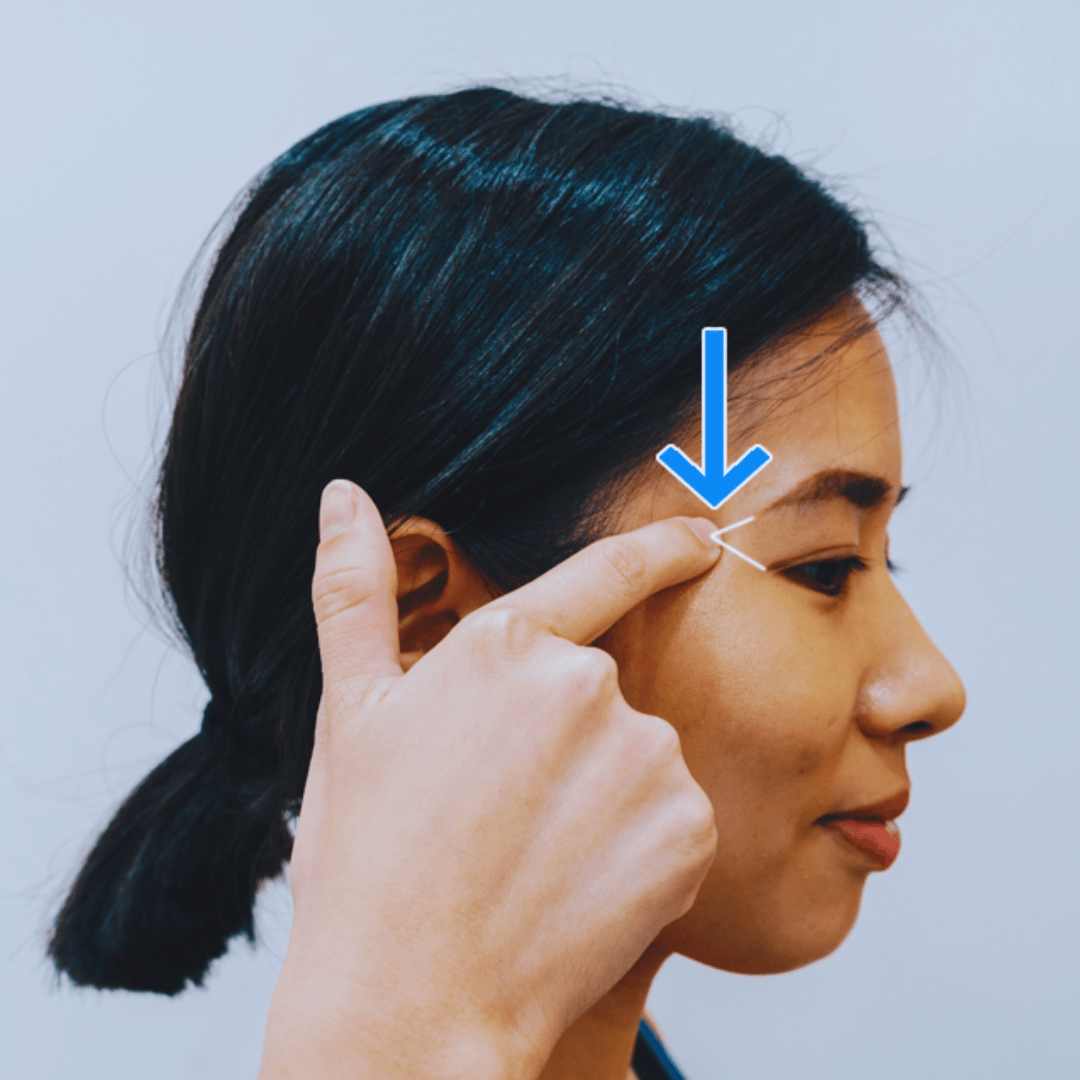
1. Temples
The pressure points on the temples are easily reached and effective for treating tension headaches.
They are easily recognized as the slightly soft and tender patches on the sides of the head. Gently pressing and massaging the temples in circular motions can relieve stress and encourage relaxation.
Then, move your fingers slowly and rhythmically in little circles if it seems comfortable, and gradually increase the pressure as you continue the circular massage.
This method aids in improving blood circulation, relaxing the muscles in the temples, and releasing any stress that may be causing your headache.
To help promote peace, take calm, deep breaths as you massage your temples. Spend a little while on each temple, repeating this practice numerous times throughout the day or anytime a tension headache arises.
2. The Base Of The Skull
It is possible to significantly reduce tension headaches by applying pressure on the bottom of the skull, also referred to as the occipital region.
This region, where the neck and head meet, contains an abundance of muscle attachments and nerve endings.
You can assist in relieving muscle tension and improving headache discomfort by applying firm pressure to this spot.
Place a pressure point on the base of the skull with your fingertips or a tennis ball, and hold it there for a few seconds with steady pressure.
You can also use little back-and-forth or moderate circular motions to increase the impact. Experiment with various angles and locations to find the most comfortable and efficient pressure.
The suboccipital muscles, which frequently stiffen up and cause headaches, are the focus of this approach.
Breathe deeply and work to relax your neck and shoulder muscles while you apply pressure. If you're using a tennis ball, roll it over the affected area slowly and softly to massage it.
Apply brief daily pressure to the skull base to reduce muscle tension and headaches.
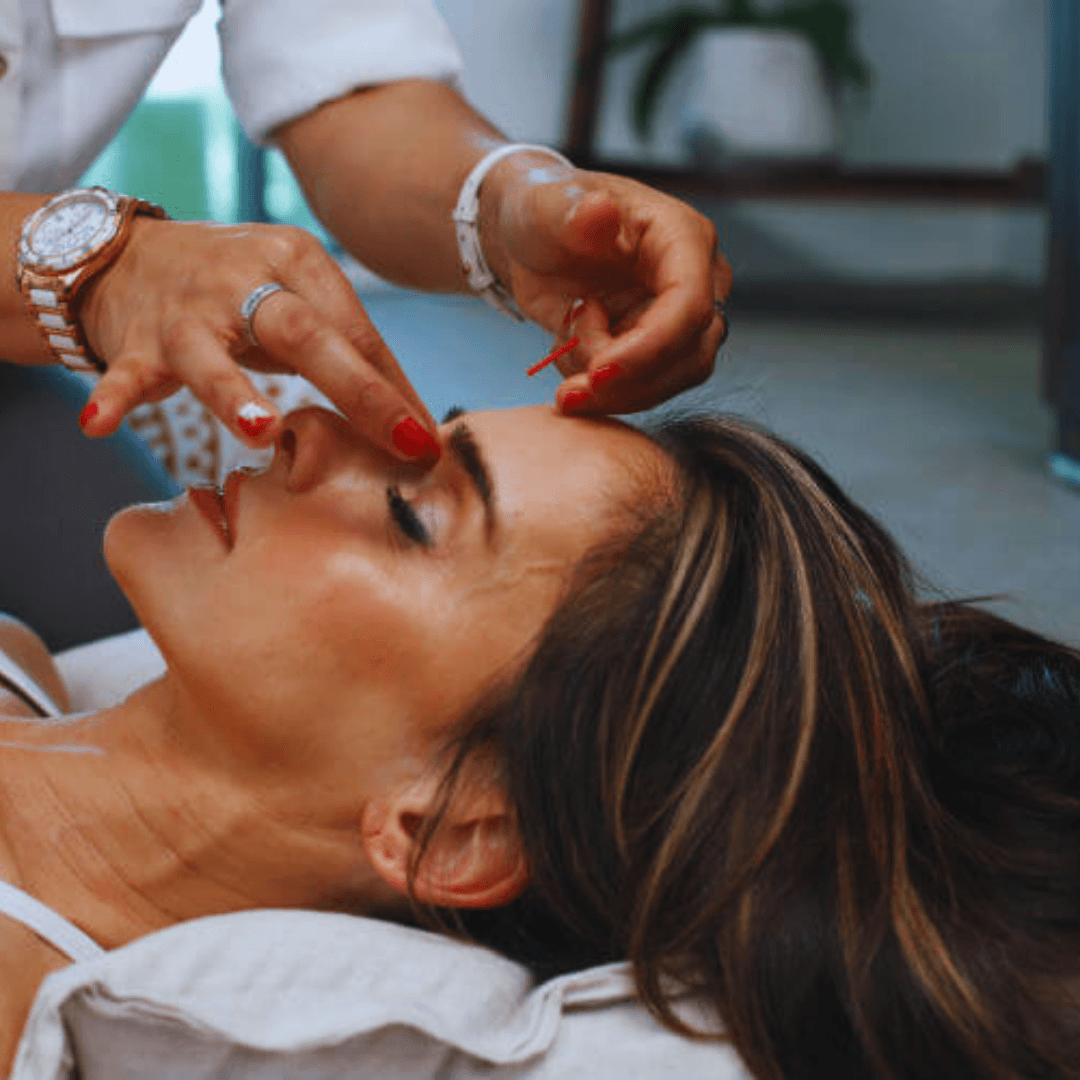
3. Bridge Of The Nose
A pressure point on the bridge of the nose, which is situated between the eyebrows, can relieve tension headaches.
This spot can assist in reducing tension and headache pain by receiving light pressure. Press the junction of the nose's bridge and the forehead with your thumb or index finger.
For a few minutes, apply a comfortable amount of pressure and hold it there while concentrating on keeping the pressure constant and steady. Experiment with various pressure levels to determine what works best for you.
Take calm, deep breaths as you apply pressure, attempting to let go of any tension you may be holding in your forehead and facial muscles.
This pressure point, connected to the frontal sinuses, can be beneficial. It can also treat headaches brought on by the sinuses.
Always be kind and pay attention to your body's reaction. Reduce or stop applying pressure if you feel discomfort or the pain worsens.
If you incorporate this approach into your headache relief routine, it can have a calming and soothing impact, which can help reduce tension headaches.
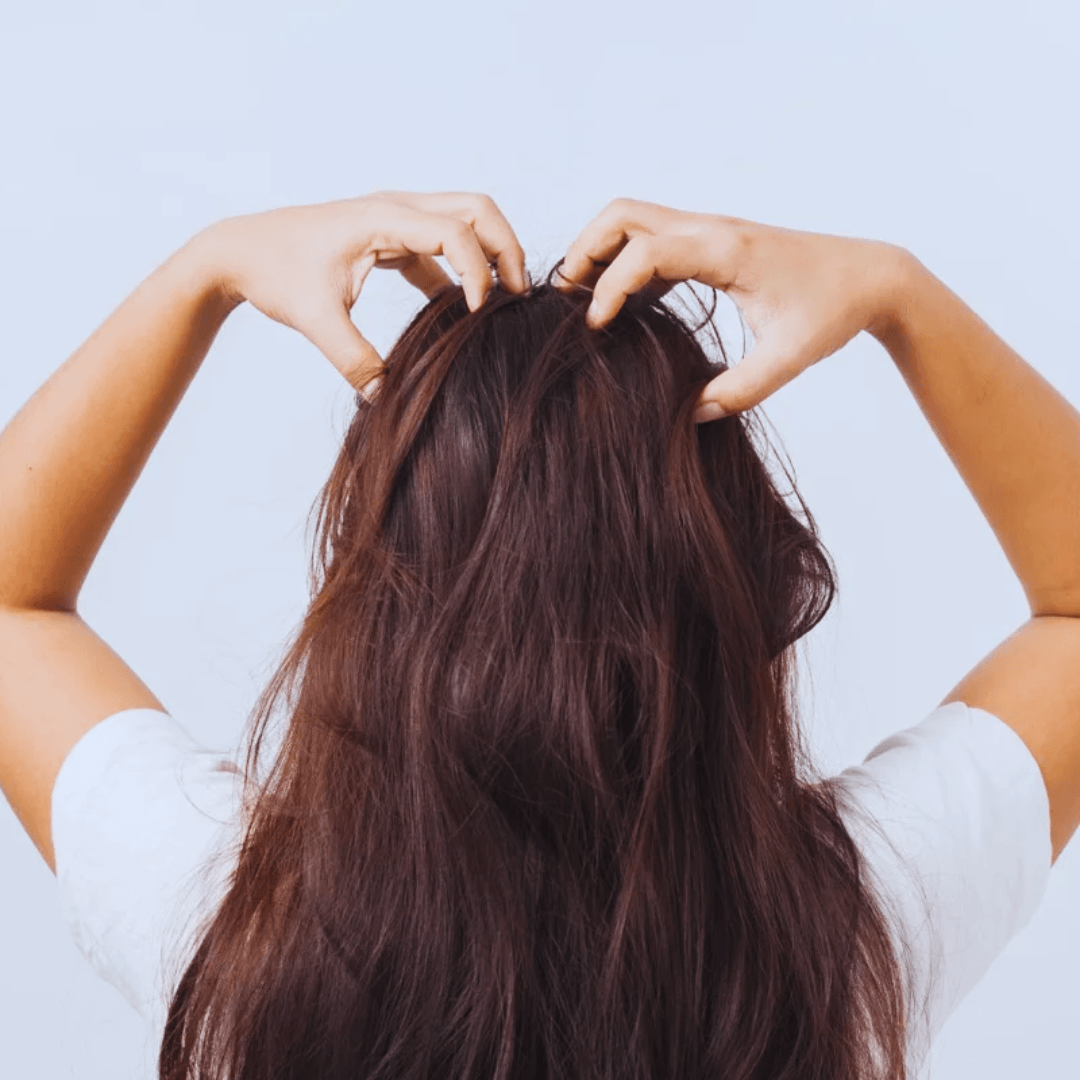
4. Scalp
Massaging the scalp is a great way to reduce stress and encourage relaxation. Thus, it is a good strategy for eliminating tension headaches.
Applying mild pressure and gentle circular motions to various parts of the scalp, whether with your hands or a specialized massage tool, can offer comfort.
Start by concentrating on the temples and massaging them gently in little circular motions with your fingertips.
As you gradually move to the back of the head, target the skull's base and the region where the scalp joins the neck.
As you adjust the pressure to your comfort level, keep making circular strokes. The area of your head that receives the most tension headache symptoms is the crown; focus on this area while you massage.
Use your fingertips to gently press and move about in this area. Breathing slowly and deeply will help you relax more during the scalp massage.
To improve the experience even further, try adding essential oils or using different types of scalp massage, such as kneading or tapping.
Massage your scalp for a few minutes each day to help release muscular tension, improve blood flow, and relieve tension headaches. This is especially effective when headaches start or when you're stressed.
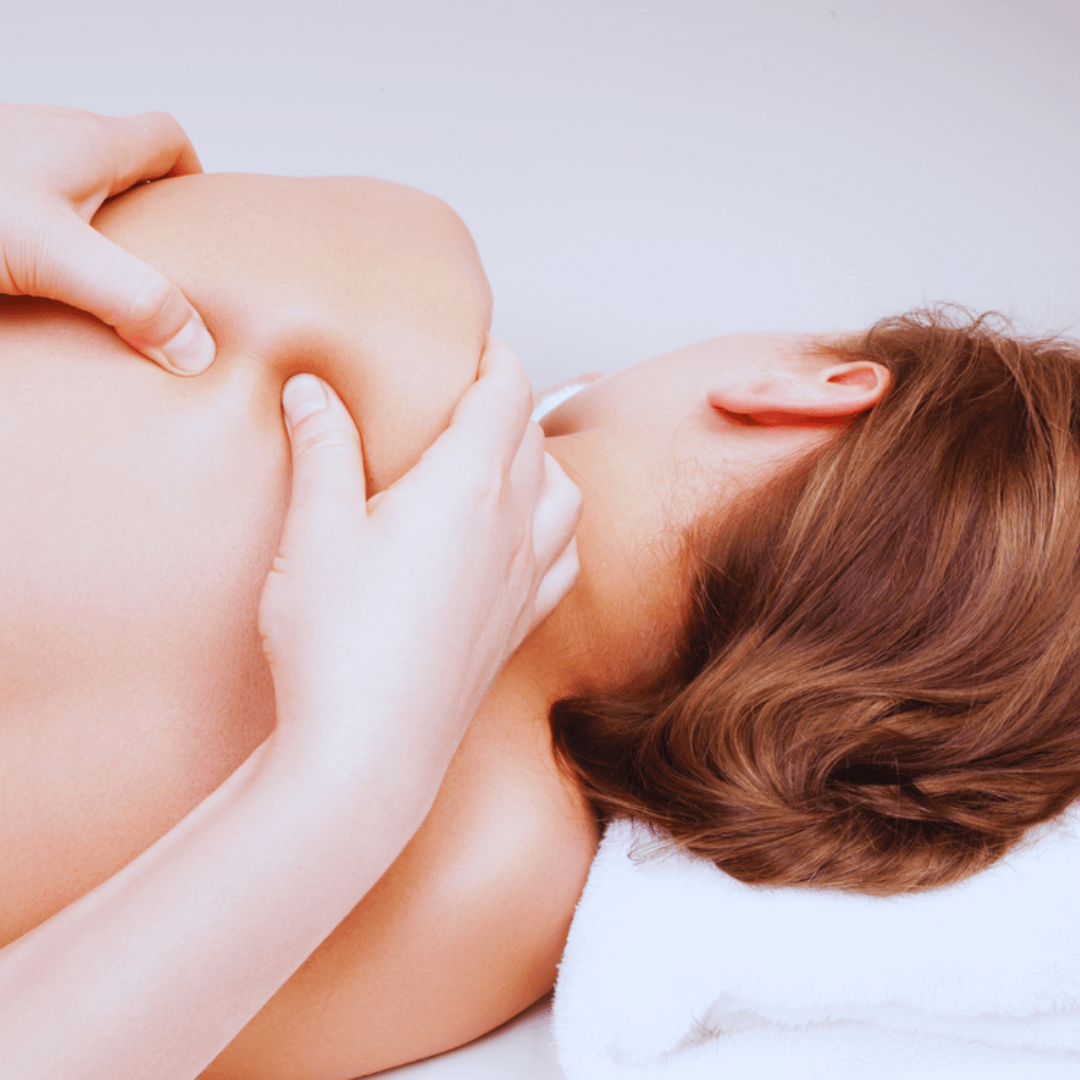
5. Neck And Shoulders
Massage therapy in the neck and shoulder areas can be particularly beneficial for easing tension headaches, frequently brought on by tension in the neck and shoulders.
Concentrating on the tops of the shoulders, the base of the skull, and the back of the neck will effectively relieve muscle tension and headache discomfort.
Your fingertips, palms, or a massage tool can apply firm yet relaxed pressure to these areas. Start by gently massaging the back of the neck in a circular motion. Gradually increase the pressure when it becomes bearable.
Many reasons for tension headaches begin around the base of your skull, so elevate your hands there.
You can apply pressure to this region using your fingertips or the palm of your hand. Hold the pressure.
Last but not least, pay attention to the tops of the shoulders, where tension tends to build. Knead the area with your fingertips or thumbs in circular strokes to release stress.
If there are any knots or tender regions, pay attention to them while you massage them and give them more attention.
To promote relaxation during the massage, keep taking calm, deep breaths. You might use massage oils or balms to enable slicker movements and boost the therapeutic advantages.
Tightness headaches can be easily prevented and managed by regularly self-massaging neck and shoulder tightness away.
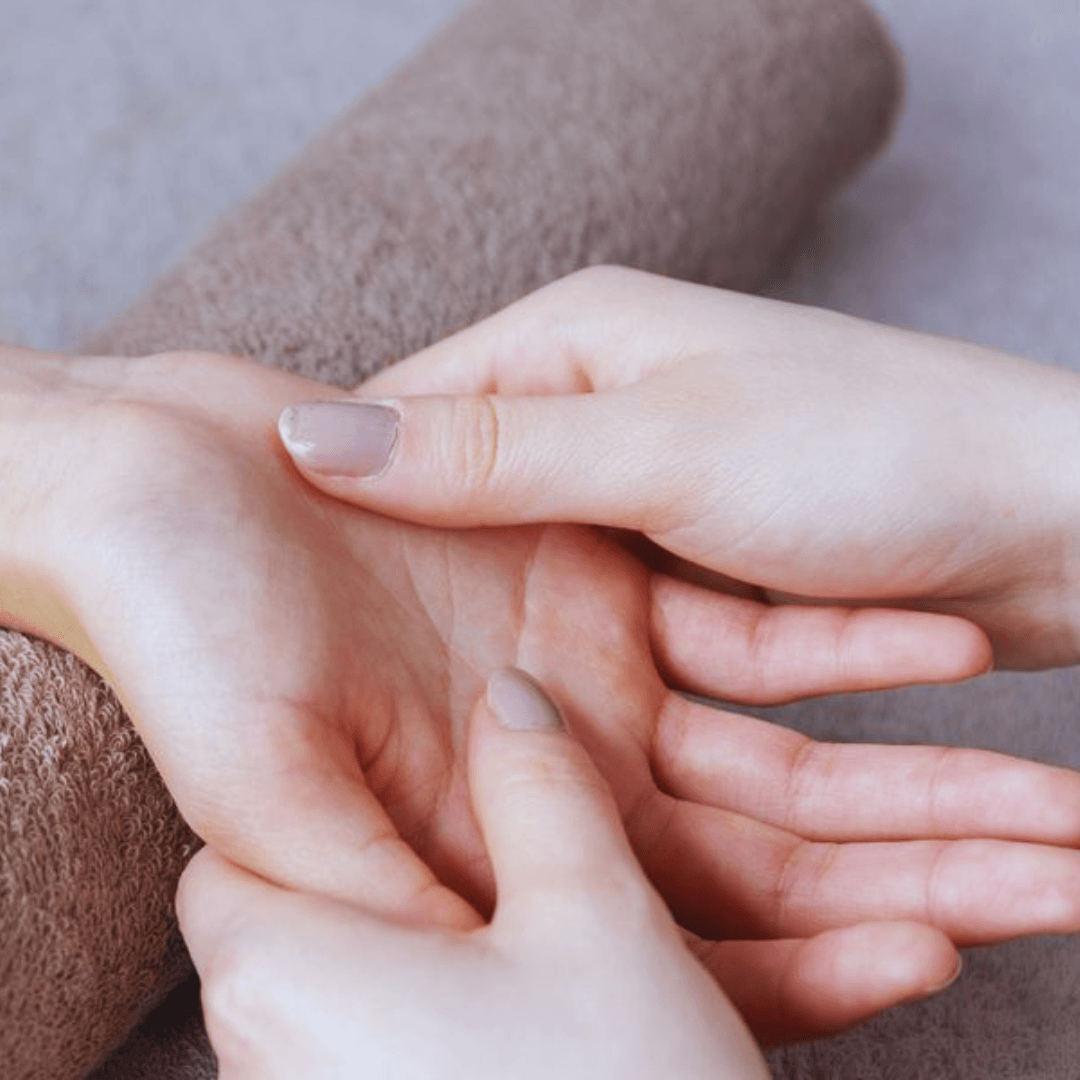
6. Hands
It can relieve tension headaches by applying pressure to certain pressure spots on the hands. The webbing has a noticeable pressure point between the thumb and index finger.
Exerting firm pressure and rubbing this area can efficiently relieve headache pain. Spend a few minutes massaging the webbing in a circular motion, using your opposing thumb and index finger to compress and press.
Focus on applying a little to moderate amount of comfortable pressure, and if needed, progressively raise it.
This pressure point is linked to the large intestine meridian in Traditional Chinese Medicine. Activating it may help ease muscle tension and encourage general relaxation.
Breathe deeply and slowly while massaging the webbing to promote peace and relieve any stress that has built up.
Although this method may assist some people, it is crucial to remember that outcomes can vary. Speaking with a healthcare expert can provide correct diagnosis and management advice for tension headaches.
A simple and practical way to relieve tension headaches is to include hand self-massage in your routine.
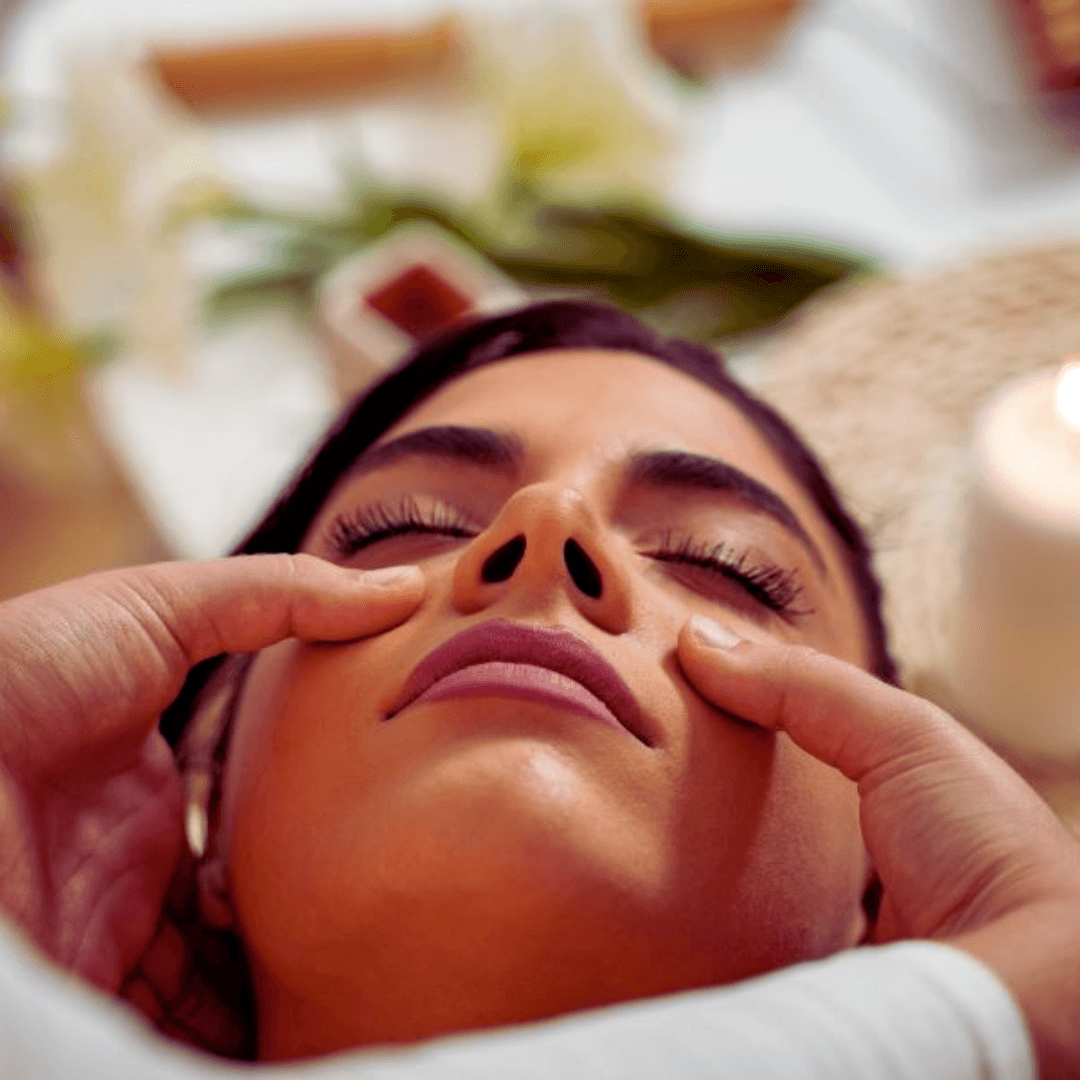
7. Sinus Points
Your tension headache may be relieved by focusing on the sinus points if nasal congestion or inflammation is a factor.
These pressure points are located slightly below the cheekbones on either side of the nose. These spots can be gently pressed to reduce sinus-related headache pain.
Apply gentle pressure to the points with your fingertips, hold briefly, and then let go. With rests in between, you can continue this procedure multiple times.
The light pressure encourages energy flow and helps ease stress and discomfort brought on by sinus-related issues.
It's crucial to remember that this method is primarily intended to treat tension headaches caused by sinusitis and may not work as well for headaches of other types.
A healthcare provider should be consulted if you have persistent or serious sinus problems to receive an accurate diagnosis and appropriate care.
However, gently pressing the sinus points can provide relaxation and help with headache relief for a momentary respite from tension headaches brought on by sinus-related migraines.
Conclusion
In conclusion, using pressure points correctly can be a useful strategy for reducing tension headaches.
It is possible to relieve muscle tension, encourage relaxation, and lessen headache discomfort by applying pressure to certain pressure points on the body, including the hands, neck, shoulders, scalp, base of the skull, bridge of the nose, scalp, and sinuses.
It's crucial to remember that pressure points only provide momentary relief and should be used with other headache care strategies.
Preventing chronic headaches can be aided by leading a healthy lifestyle, controlling stress, adopting excellent posture, and drinking plenty of water.
Using pressure point treatments and a holistic approach, you can manage tension headaches and promote general well-being.
I trust you enjoyed this article about the Best Tension Headache Relief Pressure Points. Please stay tuned for more blog posts soon.
JeannetteZ
>>>Please click here to read my all-inclusive article about Lessons That Will Teach You All About Stress<<<
>>>Are you interested in Natural Healing And Stress Relief through Herbs? Please click here for my #1 Recommendation<<<
Your Opinion Is Important To Me
Do you have thoughts, ideas, or questions? I would love to hear from you. Please leave me your questions, experiences, and remarks about this Tension Headache Relief Pressure Points article in the comments section below. You can also email me at Jeannette@Close-To-Nature.org.
Disclosure
This post may contain affiliate links. I earn from qualifying purchases as an Amazon Associate and other affiliate programs. Please read my full affiliate disclosure.
You might also enjoy these blog posts:
Does Drinking Tea Reduce Stress?
All You Need To Know About Stress And Alcohol
Best Surprising Benefits Of Laughing
